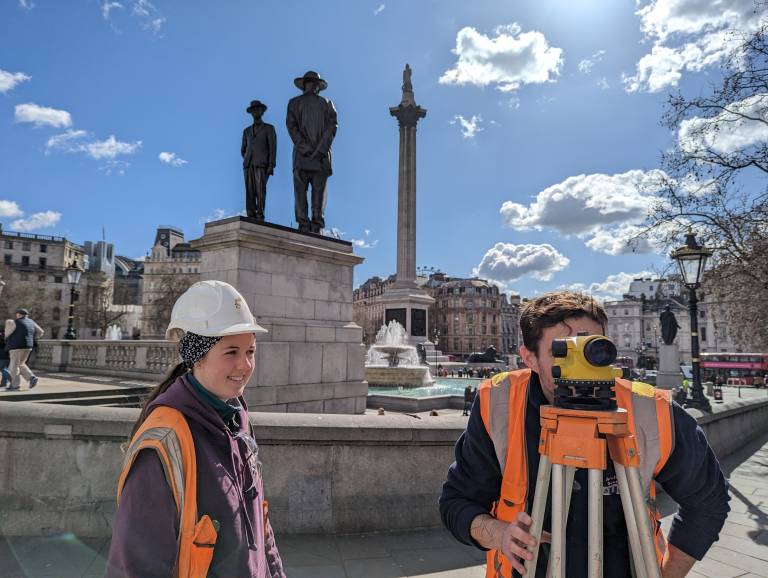ASE Archaeologists excavating at The National Gallery
16 March 2023
ASE archaeologists are currently excavating at the National Gallery in advance of building work to mark the Gallery’s Bicentenary. Looking at old maps and previous excavations nearby gives us an idea of what we might find as we delve into London’s complex past!

The National Gallery sits in the hinterland of the former Roman settlement of Londinium, established around 2km to the east in the mid-1st century CE. This spot was likely a managed agricultural landscape for growing crops. However, nearby excavations have also revealed military and religious activity. This could be a chance for archaeologists to better understand how people used this area in Roman times.
The walled city of Londinium was abandoned in the 5th century CE. With the coming of the Saxons the settlement shifted west along the modern area of the Strand. By the 7th century it was known as Lundenwic and was primarily a trading centre with a waterfront. The National Gallery lies to the western end of this settlement and excavations close by have found material of this date, so there is a chance we could recover some as well.
The history of the National Galley and this part of Westminster is amazingly complex, from King Richard II’s Royal Mews for hunting hawks to stables and even a possible row of houses. We might be surprised and find something unusual or completely unexpected!
Hopefully these excavations will allow us to shine more light on this fascinating part of London. Find out more about the National Gallery’s plans for their Bicentenary in 2024.
[Image shows previous excavations on a possibly similar urban site in London]
 Close
Close

